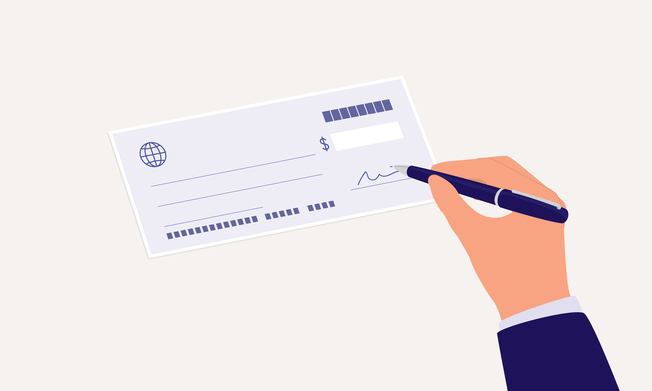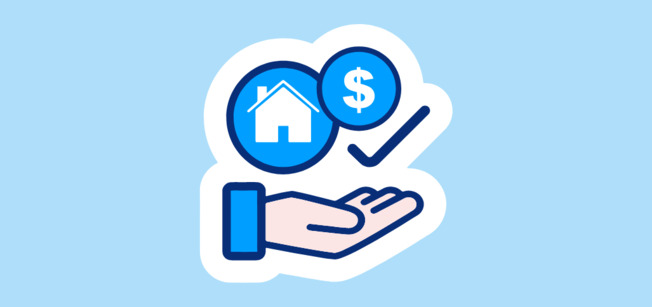
Rent-to-Own Leases: Everything You Need to Know

By Lilly Milman
Nov 08, 2023
One common complaint about renting is that the renter is throwing money away; rather than building home equity through a mortgage payment, the renter is paying a similar amount (or in some cases, even more per month) for a home that is only temporary. However, if one is paying rent every month, it can be difficult to also save up a down payment, making it feel nearly impossible for renters to eventually graduate into homeowners. In some cases, this is where rent-to-own leases can ease some of the burden — and make rent payments feel more fruitful. If this is your financial situation, then a rent-to-own property may be right for you.
What is a rent-to-own lease?
A rent-to-own agreement or lease is when a tenant agrees to rents a property for a specified amount of time before eventually purchasing it from the landlord at the end of the lease period. Generally, there are two kinds of rent-to-own or lease-to-own agreements: lease-option agreements and lease-purchase agreements.
A lease-option contract offers more flexibility, as it gives the renter the option to purchase the property at the end of the lease term but does not require them to do so. Meanwhile, a lease-purchase agreement is a contract in which a tenant agrees that they will purchase the property at the end of the lease — and can be penalized or even sued if they don’t follow through on the purchase. At the very least, if a tenant does not purchase the property at the end of a lease-purchase agreement, they will lose all the payments made to the property owner up until that point.
How does a rent-to-own lease work?
In both a lease-option agreement and a lease-purchase agreement, the tenant and the landlord agree upon a rent and purchase price at the beginning of the lease — as well as a future closing date that occurs at the end of the lease period, often between one and three years into the future.
In addition to including details about the eventual sale of the house, the rent-to-own contract will also include standard lease terms that the tenant must follow while renting the apartment, just like in any other rental agreement. These terms should address who pays for maintenance during the time of the lease, what the options are for extending the rental period, and what the penalties are for late payments.
With either kind of rent-to-own deal, at least a portion of rent payments (often called a monthly “rent credit”) typically goes toward the down payment, and the tenant is also usually expected to pay an “option fee” upfront. Equal to somewhere between 1% and 7% of the property’s purchase price, the option fee is a nonrefundable one-time deposit paid to the landlord as part of the future down payment. Both the rent credits and the option fee are held in an escrow account by the homeowner until the time of the home sale. In a lease-option agreement, if the tenant ultimately chooses not to purchase the property, then the option fee as well as all rent credits paid are lost.
At the end of the lease agreement, the tenant then applies for a mortgage loan to secure financing for the home and pays the remainder of the down payment if necessary.
What are the pros and cons of rent-to-own leases?
You may now be wondering: Why would anyone choose to simply rent rather than renting-to-own? The truth is that, for both the renter and the landlord, there are pros and cons to a rent-to-own agreement.
The Pros
- It can help you save for a down payment. If you are struggling to save for a down payment while simultaneously renting, a rent-to-own agreement can make it a bit easier to incrementally contribute to a down payment over a period of time.
- You can “test run” the property before you buy it. Living in the rent-to-own home you are intending to purchase for a year or two before the closing date allows you to familiarize yourself with its quirks, as well as with the surrounding neighborhood. If you experience any major red flags during that time, you can back out of the sale before making an even bigger commitment. While you may lose the payments made up until that point, you can save yourself years of the financial trouble that can come from buying the wrong property.
- You are given time to improve your credit score. For those with poor credit, getting a reasonable mortgage can be difficult. With a rent-to-own agreement, you can lock in the property you want while also giving yourself a few years to build your credit and increase your chances of getting a better interest rate on your mortgage in the future.
The Cons
- It can ultimately end up costing you more. Rent-to-own leases can be quite expensive. Because of the rent credits you are paying, your monthly rent payments will likely be higher than market rent. Plus, the nonrefundable option fee can put you out of thousands of dollars upfront. If you end up not purchasing the property, then you are down much more cash than you would have been had you pursued a traditional rental.
- Rent-to-own leases can be difficult to find. Most landlords aren’t eager to sell their properties to tenants. Finding an opportunity for a rent-to-own lease agreement may elongate your housing search significantly, as they are less common than traditional rental agreements.
- The home’s purchase price may be above current market rate. If the homeowner is locking in a purchase price at the beginning of the lease, they may land on a number that seems too high based on the property’s current market value, as they are predicting how much the property would sell for at the future date. In another scenario, your agreement may stipulate that the homeowner has the option to increase the purchase price at the end of the lease to match current market rates.
Who is the right candidate for a rent-to-own lease?
Not everyone is an ideal match for a rent-to-own lease. The best candidates are tenants who feel very sure about the property and neighborhood where they want to live long-term and are confident that they will be able to secure a mortgage upon the end of the lease, but just need a little help saving for a down payment along the way. The structure of the monthly rent credit payments can foster accountability for tenants in that situation.
For those who aren’t sure that they will be able to secure financing from a mortgage lender, like renters who have gone through bankruptcies or foreclosures previously, a rent-to-own lease is not ideal. If you are denied a mortgage at the end of the lease and are unable to purchase the property, then you will lose your option fee and rent credits. The same goes for those who are unsure about where they want to live; deciding that you do not like the property or neighborhood where you signed a rent-to-own agreement will also result in lost funds.
Tips for a Rent-to-Own Lease
If you do decide to pursue a rent-to-own arrangement, then there are a few tips you should keep in mind throughout the process:
- Do not skip the home inspection. When you are getting ready to sign the agreement, treat it as if you are preparing to purchase the property rather than rent it. You’ll want a professional to inspect the home to make sure it is in good shape before you agree to purchase it.
- Do not make any payments before you sign a contract. This is the same advice that we give to renters to help them avoid scams. If the homeowner is insisting you put down a deposit or make a payment before you tour the property and sign the lease agreement, then they make be attempting a scam.
- Consider employing a real estate attorney to go over the terms of the agreement before you sign anything. While you should closely read the terms of any contract you sign, you may want extra help from a professional before signing a rent-to-own agreement that will bind you into purchasing a property. A real estate attorney can ensure that the contract includes terms that work for you and help you fully understand what you are signing up for.
The Bottom Line
Rent-to-own agreements are one path to homeownership for those who are struggling to save money for a down payment on their own. There are two types of agreements: lease-option agreements, which give tenants the flexibility to choose whether or not to buy at the end of the lease, and lease-purchase agreements, which bind the tenant to the purchase. However, they aren’t the best option for everyone — and there are downsides. If the tenant ends up reneging on the purchase at the end of the lease in either type of contract, then they are out a significant amount of money that they put toward the down payment through monthly payments and upfront fees.
Top cities
Atlanta Apartments
1,999 apartments starting at $600/month
Austin Apartments
4,949 apartments starting at $600/month
Baltimore Apartments
1,472 apartments starting at $500/month
Boston Apartments
3,499 apartments starting at $940/month
Charlotte Apartments
2,903 apartments starting at $450/month
Chicago Apartments
4,012 apartments starting at $450/month
Dallas Apartments
5,609 apartments starting at $604/month
Fort Worth Apartments
2,193 apartments starting at $600/month
Houston Apartments
4,504 apartments starting at $590/month
Las Vegas Apartments
1,081 apartments starting at $704/month
Los Angeles Apartments
11,535 apartments starting at $625/month
Miami Apartments
544 apartments starting at $1,000/month
Milwaukee Apartments
928 apartments starting at $465/month
New York Apartments
4,118 apartments starting at $488/month
Oakland Apartments
608 apartments starting at $885/month
Orlando Apartments
842 apartments starting at $825/month
Philadelphia Apartments
3,657 apartments starting at $550/month
Phoenix Apartments
4,153 apartments starting at $599/month
Pittsburgh Apartments
1,223 apartments starting at $600/month
Portland Apartments
2,519 apartments starting at $599/month
Raleigh Apartments
1,367 apartments starting at $750/month
San Antonio Apartments
3,925 apartments starting at $525/month
San Diego Apartments
2,960 apartments starting at $650/month
San Francisco Apartments
436 apartments starting at $675/month
San Jose Apartments
405 apartments starting at $1,300/month
Seattle Apartments
3,623 apartments starting at $450/month
Tampa Apartments
1,078 apartments starting at $800/month
Washington DC Apartments
2,878 apartments starting at $745/month


